Last weekend, I mentioned that I have a tendency to try to fix or manage difficulties as soon as they arise. This can be a good thing, at least when it comes to concrete problems that demand ready solutions. It can also be a handicap, especially when the issue at hand defies easy troubleshooting. In trying to “fix” something that’s inherently complex, I sometimes create difficulty, rather than alleviating it.
When this happens it’s often because I appeased my aversion to discomfort–I wanted the problem to go away quickly, so that I wouldn’t have to sit with it. Had I exercised a little patience, I might have found my way to a solution that was more fitting than the hasty fix I manufactured instead.
The idea of patient problem solving has been on my mind ever since. Now I’m considering it within a new context–medicine–thanks to two articles I read this week.
First, I came across this blog post on Kevin MD, written by pediatrician Chad Hayes. Hayes addresses the frequent over-treatment of childhood illnesses, which typically results in unnecessary prescription of antibiotics. He notes that, far from being negligent or careless, choosing not to treat a child often demands a high level of expertise:
In reality, doing “nothing” involves quite a bit of work. Choosing to do “nothing” presumably involves the doctor listening to the patient’s symptoms, gathering relevant details, performing a physical exam and reaching the conclusion that no further testing or treatment is warranted. In many cases, doing “nothing” is the most appropriate course of action. And in these cases, doing more would place the patient at risk for harm from unnecessary tests or treatments . . .
Hayes acknowledges the difficulty of refraining from medical treatment: after all, parents bring their children to his practice because they believe that action is warranted. It’s often easier for a pediatrician to prescribe medicine or order tests than take a watchful waiting approach (and defend it to concerned family members).
But precipitous action carries its own risks, too, especially given the growing threat of antibiotic resistance. Hayes also notes that doing nothing compels doctors to practice their communication skills with families and patients, which can benefit everyone:
“Doing no harm” frequently means doing nothing at all. But doing “nothing” well is more than saying “it’s just a virus.” It requires expertise, confidence, and communication — and it’s much easier if the doctor has already developed a relationship of trust with the patient or family. The doctor must know enough to make an accurate diagnosis (or at least rule out the scary ones) . . . [T]he diagnosis should be explained to the family in a way that they can understand. The family should . . . leave the visit understanding why “nothing” was done — and ideally, being grateful for a doctor that cares enough to do nothing.
Yesterday, I read Atul Gawande’s article called “The Heroism of Incremental Care.” Gawande, like Hayes, is interested in scenarios in which doing less, rather than more, is the most caring act. He focuses not on pediatrics but on chronic illness. For those patients whose afflictions are difficult to diagnose or treat, it’s often the case that the best doctors can do is to be honest, communicative, and consistently supportive.
Gawande notes that slow care often challenges doctors’ sense of their own competence as problem-solvers:
I was drawn to medicine by the aura of heroism—by the chance to charge in and solve a dangerous problem . . . I knew there was a place for prevention and maintenance and incremental progress against difficult problems. But this seemed like the real work of saving lives. Surgery was a definitive intervention at a critical moment in a person’s life, with a clear, calculable, frequently transformative outcome.
The quote got me thinking about what I’ve been learning in my counseling class. Our professor urges us to carefully examine our “righting impulse,” that part of us that would like to “fix” a client. She makes us aware that our role as counselors is not to be “experts” or to dole out advice, but rather to support clients as they come to their own conclusions about their health. There’s a time and a place to offer practical resources, but it’s the client who determines when that should happen and what the guidance should look like.
It reminds me of a conversation I had with a health practitioner who said that, in her experience, patients take in as much information as they are ready to digest at a given time. Tempting though it may be to glut a patient with knowledge and recommendations–after all, it can satisfy one’s own sense of expertise or efficiency–the sharing of information should be sensitively tailored to the patient and his or her needs. Urgent professional opinions should always be voiced, but with a sense of respect for the patient’s circumstances and state of mind.
It can’t be easy for health care providers to balance their righting impulses with their regard for patients’ autonomy. Gawande points out that medical culture and training make it especially difficult. The medical specialties that are focused on longterm, incremental care, like primary care and gerontology, are often less lucrative than others. They offer less reinforcement of practitioners’ skill in the form successful procedures or a heroic interventions. They demand patience and open, skilled communication. But they are, according to Gawande, heroic nonetheless, if only because they demand that doctors be finely attuned to patients’ needs.
As someone who admires proficiency and expertise, it’s taken me a while to recognize the value of patience and restraint. I’m still learning valuable lessons about when to act, when to pause, and how to judge the difference. I hope I’ll get better with practice, especially when it comes to serving others.
Hope you enjoy the reads. But first, the recipes.
Recipes
With Superbowl Sunday on the way, you might be on the hunt for finger food or appetizers to feed a crowd. I’ve got my eye on Hannah’s beautiful chanterelle flatbread pizza, which would be perfect for sharing (or not sharing). Love the addition of roasted garlic.
Elise’s roasted root vegetables with tomatoes and kale is one of those not-recipe recipes, a dish so simple and easy to adapt that it becomes your own over time. Elise notes that you can make it with any combination of parsnips, rutabagas, carrots, potatoes, golden beets, turnips, or celery root. As a lover of all root veggies, I can’t wait to try some different combinations.
I’m always looking for ways to vary my homemade hummus routine, and right now I’m intrigued by Natascha Boudewijn’s recipe for lentil hummus, which I found through The All Day Kitchen. Maybe it’ll be my excuse to try nigella seeds!
If you’re looking to make more homemade snacks, check out Nicole’s tasty whole food energy bars. They’re packed with almonds, hemp seeds, chia, oat flour, and lots of other nutrient-dense ingredients, and dried cherries give them a sweet and sour kick.
In my effort to finish and use what’s in my pantry, I’ve been doing a little inventory, and I have some black rice waiting to be turned into something tasty. I love Meredith’s colorful black rice rainbow salad, which features vegetable ribbons and a minty almond dressing.
Reads
1. First, Atul Gawande’s essay on the critical importance of incremental care and the forces that threaten to make it less accessible to those who need it most.
2. Chat Hayes on the judgment and discrimination it takes to “do nothing” when treatment isn’t called for.
3. Mortality rates in the country are sliding backwards for a number of reasons, including opioid use. A new study indicates that the impact of diabetes on mortality has been underestimated because comorbidities like heart disease or kidney failure are often listed as official causes of death. Rather than being the seventh leading cause of death, the study suggests, it may be closer to the third.
4. The risks of childbirth are much lower today than they were even half a century ago, but childbirth injuries to the mother, including pelvic floor trauma, tearing, and prolapsed uterus, may be rising once again. Kiera Butler’s article for Mother Jones examines why this is: one reason is that women are having children later in life, which increases a risk of complications.
Butler notes that women are often prepared for the risks of Caesarean delivery and given genetic counseling to help prepare them for the diseases that their children might inherit or develop in utero. But they’re not always adequately prepared for the injuries that could result from vaginal delivery, and if they sustain such injuries, they’re not always given adequate support with chronic pain or long-term consequences. I was really surprised by some of the statistics Butler shared and the prevalence of the complications she’s discussing. I’m glad she’s bringing more attention to the topic.
5. Finally, an interesting public health story on how Iceland managed to dramatically curtail drug and alcohol abuse among teens.
Rather than focusing the bulk of their efforts on addiction treatment, researchers wondered if they could offer prevention in the form of an alternative to the “highs” offered by drugs or drinking. Harvey Milkman, one of the architects of the experiment, reports that he and his colleagues were driven by the question of how they could “orchestrate a social movement around natural highs: around people getting high on their own brain chemistry—because it seems obvious to me that people want to change their consciousness—without the deleterious effects of drugs?”
Milkman conducted early research in Denver, with the formation of Project Self-Discovery. The organization offered teenagers natural-high alternatives (like sports or dance) to drugs and crime. Teens also got life-skills training, which focused on improving their sense of self-worth. Researchers in Iceland got wind of the project and asked Milkman to help them implement something similar on a national level.
Sports were encouraged, curfews instituted, and major drops in addiction, as well as crime and gang membership, followed. The article examines how the changes came to be and speculates about whether or not something similar could ever be instituted in the US. Some of the measures implemented, including curfews, are rightly controversial, an impingement on young peoples’ freedom. But the attention to brain chemistry, working with the impulse to experience a high rather than trying to fight it, is if nothing else an interesting approach.
Hope you enjoy–and I’ll see you back here this week with a recipe that’s great for sharing.
xo
You might also like
Hello, hello, and happy Sunday. It’s been a week of highs and lows here: September’s customary temperature swings, some ups and downs in mood, and some recipe testing triumphs followed up by a couple of spectacular fails. It’s all keeping me on my toes. On Monday evening, a friend invited me to check out a new play, called Aubergine. It’s the story of a chef, Ray, whose father has recently entered hospice care. In nursing his dying father, Ray is forced to confront…
My current internship rotation is a pretty big departure from the last one. It’s outpatient nutrition counseling at a community health center with multiple locations around the city; I’m splitting my time between Harlem, Chelsea, and the Bronx. The work is nearly all diabetes management, with some weight management and general nutrition guidance thrown in. The work often feels repetitive, and in some ways I miss the intensity and variety of intellectual challenges that I had working in the hospital this fall. But…
Welcome back from the weekend, friends. I’m posting a day late in honor of the long weekend, which I enjoyed so very much; my boyfriend and I spent an evening at Mari Manor, and I can’t wait to tell you all about in a separate post. Now I’m home, catching up on work and gazing at the following wonderful recipes (and thought-provoking links). Sorry to share my own recipe, but…you guys gotta try these pumpkin pancakes, from my latest New Veganism column for Food52. Love the…
Happy Sunday, folks. Thank you for all of the kind words and feedback during NEDA week. It’s always a pleasure to write those posts and to hear your insights. This week will have a new and different theme: I’ll be completing the SNAP food challenge. This is an assignment for my Community Nutrition class, and the purpose is to shed some light on what it feels like to live with food insecurity. I spoke more about the challenge in this post, but the…

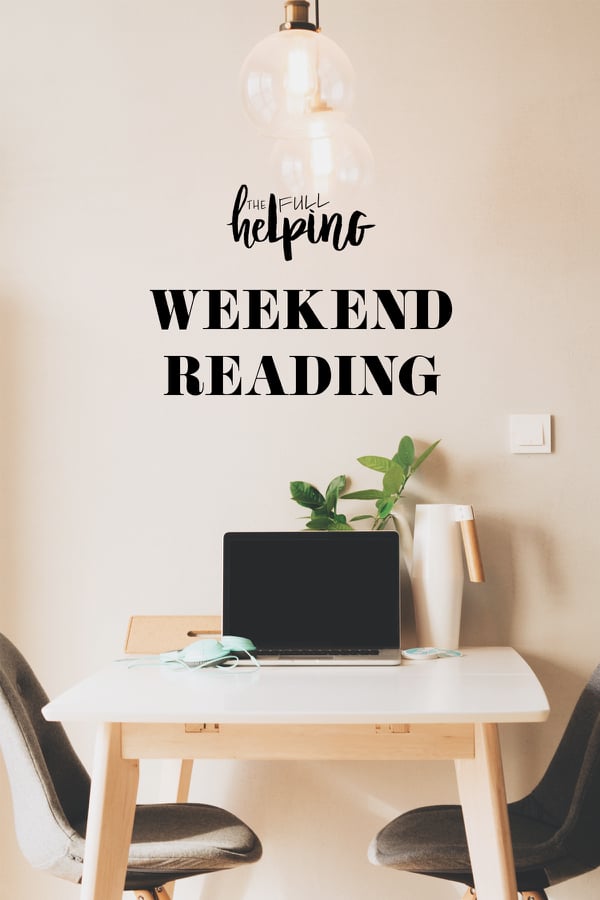
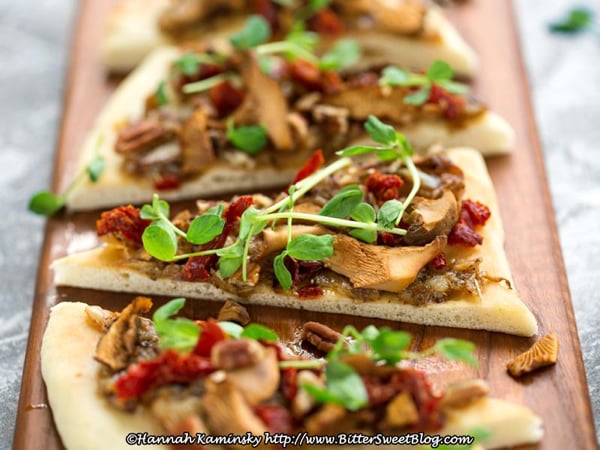
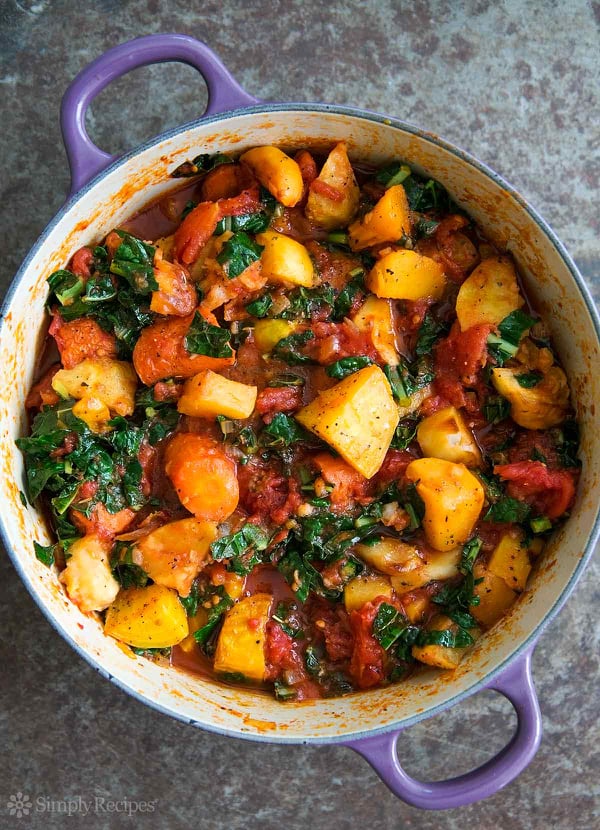
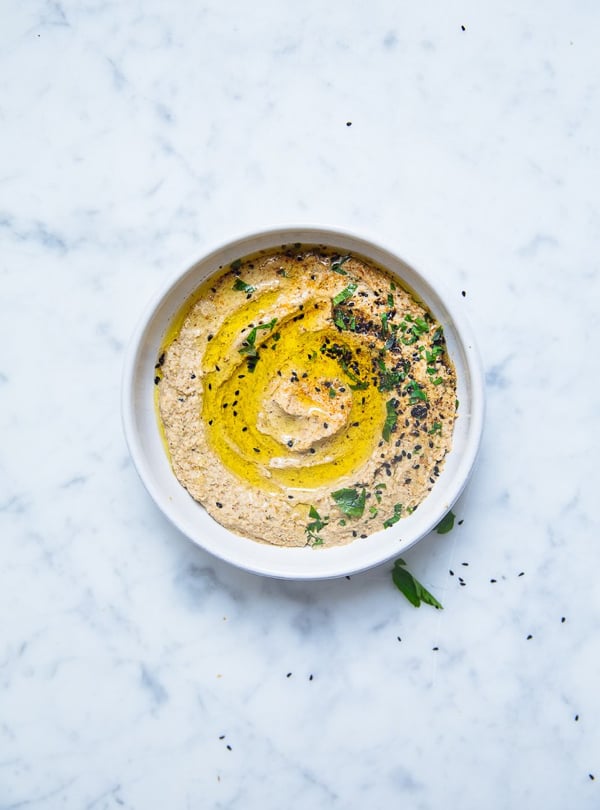
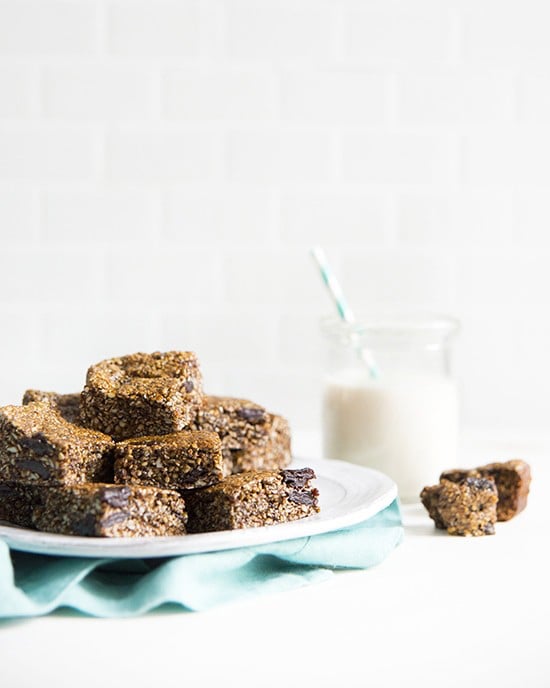
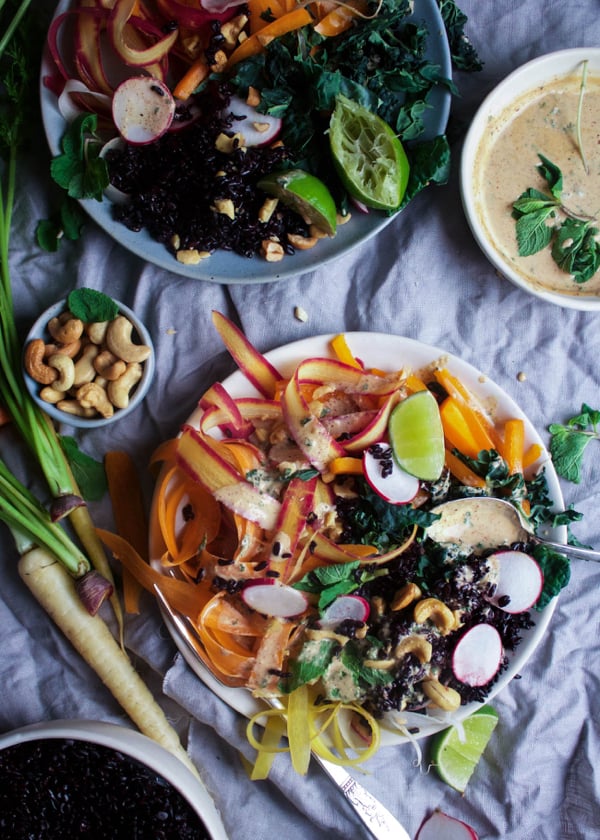
Leave a Comment
I look forward to Weekend Reading every week! I’d love to try Meredith’s Black Rice Rainbow salad but the link takes us to the energy bars. Where can I find the recipe?
Sorry about that, Stephanie! The link should be fixed if you click through the post. You can try refreshing your cache if you’re still getting taken to the wrong destination.
yeah, try nigella!
Thank you for sharing the Mother Jones piece…and also OH that piece! It’s blatantly anti-natural birth stance was hard for me to get through (even as someone who also finds fault with the natural birth movement). I’m happy the topic is being discussed more (obviously – gimme ALL the vag talk!) but I wish it had been done differently. I feel like all it will do is fan the flames of natural vs hospital birth mommy wars AND the fear mongering rhetoric that’s so common around pregnancy and birth. I long for a healthcare system that fundamentally views women as more than babymakers (why else would postpartum visits focus only on babies?) and vaginas as magical not scary places and where pelvic floor PT is mandatory + standard pre- and postpartum.
And on the other end of #allthefeels, Gawande’s piece – my fucking heart. YES YES YES YES. I don’t even know where to start with it’s beauty. But I especially love his sassy PCP co-worker who was like “Evidence. *micdrop*” This was a total gem and I’m so happy I made my way through it.
xo
Dear Gena, Thank you for your reflections on patience before acting and slow care. You know “nothing as something” is a recurring theme on my own blog, and so I really appreciate this medical angle to it as well, especially since as a peron living with serious chronic illness over decades I can’t say enough how hard it is and yet how valuable to find a doctor willing to do what Gawande writes about. I look forward to reading the whole article. It’s funny, too, because I have been watching episodes of Grey’s Anatomy to “relax” and I often end up being amazed at all the heroic efforts and the mindset that goes with it. Also the food you picked this week looks great. Loved the root vegetable stew, the mushroom pizza and the pretty black rice salad!! Thank you!! xoxo
So touched and honored to have made your weekend list of recipe highlights! Thank you, my dear. <3